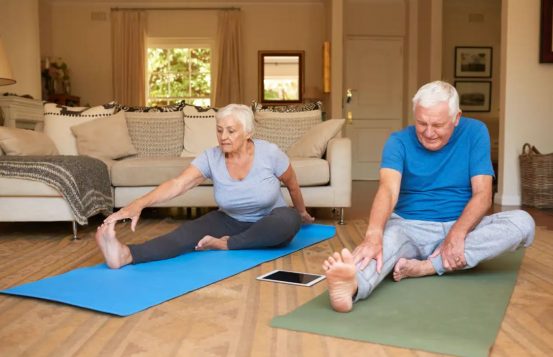With the Government directing people to stay at home, many Australians are not getting the same level of “incidental exercise” that we usually do, such as walking to work, visiting friends or even taking the dog for their daily walk (sorry Rex).
Research shows that periods of reduced physical activity can affect our health – especially if we are older or have a chronic health condition.
In particular, it can impact on our cardiorespiratory fitness – how well our lungs and heart are transporting oxygen around our bodies when we move around.
Generally cardiorespiratory fitness peaks in our twenties – and then steadily declines as we get older.
So, what can we do while we are self-isolating to stay fit?
Researchers from the Baker Heart and Diabetes Institute have provided some great tips in The Conversation that we felt were worth sharing:
1. Set a regular time to exercise each day, such as when you wake up or before having lunch, so it becomes routine.
2. Aim to accumulate 30 minutes of exercise on most if not all days. This doesn’t have to all be done at once but could be spread across the day (for example, in three ten-minute sessions).
3. Use your phone to track your activity. See how many steps you do in a “typical” day during social distancing, then try to increase that number by 100 steps per day. You should aim for at least 5,000 steps a day.
4. Take any opportunity to get in some activity throughout the day. Take the stairs if you can, or walk around the house while talking on the phone.
5. Try to minimise prolonged periods of sedentary time by getting up and moving at least every 30 minutes, for example during the TV ad breaks.
6. Incorporate additional activity into your day through housework and gardening.
You can read the rest of their advice here.
There is some good news too – research shows taking up physical activity after period or inactivity can improve cardiorespiratory fitness.
So, it’s just a matter of getting back on the horse – or the exercise bike – when normal life resumes.




Discussion1 Comment
Thanks for your website. I am finding it very helpful. I live in a Retirement Village, but it is clear that the next stage i.e. how you leave to get into Aged Care is going to be the biggest challenge.
But also on Village Managers… ours is called a ‘Services Manage’r,, but he does often behave like our boss e.g. managing us.. which we find irritating. Be interested in if you think the title is appropriate. We are one of a dozen or more villages under the same organisation, so our real ‘management’ comes from above.